Premium: Is the Catarina Macario Era Upon Us?
The 22-Year-Old USWNT and Lyon Attacker Has Unlimited Potential and a Remarkable Life Story. But Can She Get the Freedom She Desires—At Home and on the Field? We Went to France to Interview Her.
DÉCINES-CHARPIEU, France — The next manifestation of American women’s soccer greatness trains every day on the site of the last one.
In July 2019, the U.S. won the World Cup at Groupama Stadium, the home of Olympique Lyonnais, European club champion in five of the past six seasons. Two and a half years later, the player who could lead the U.S. to a fifth World Cup title—22-year-old Catarina Macario—is running drills with her Lyon teammates on a cool gray morning at their sparkling practice facility just outside the stadium.
The scene is eye-opening for a few reasons. For starters, joining Macario are some of the planet’s preeminent players—Ada Hegerberg, Daniëlle van de Donk, Delphine Cascarino, Amandine Henry, Kadeisha Buchanan, Ellie Carpenter, Christiane Endler—who turn even the most basic of training exercises into a high-speed symphony of ball movement. But something else also stands out: Lyon’s men’s team, itself a Champions League semifinalist two seasons ago, is training two fields over in the exact same conditions as the women’s team.
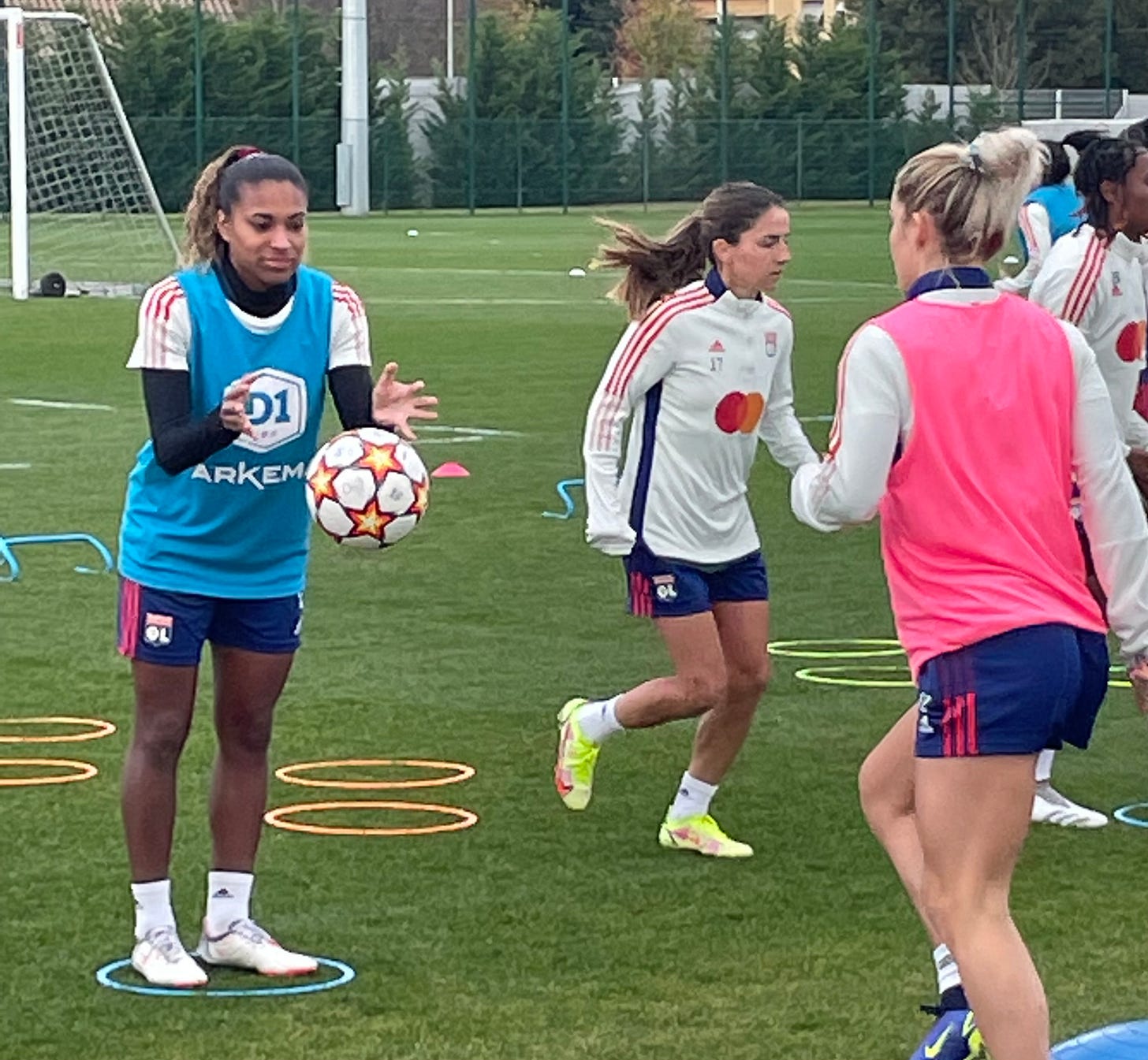
Not even fellow Champions League contender Bayern Munich, whose women’s team is based at a location miles away from its men’s squad, can say this: From Lyon’s manicured training fields to its cutting-edge gym and recovery facilities to its pristine locker rooms, the women are treated with the same institutional respect as the men. Lyon’s approach is what led Hegerberg, the 2018 Ballon d’Or winner, to demand the same from her national team, Norway, and refuse to play for her country until it happens.
And it helps explain why Macario chose to join Lyon 12 months ago. “Even when I came from Brazil to the U.S., that’s been something that I’ve always wanted: equality. People that actually support and value what I’m doing,” Macario tells me during an hour-long interview after practice. “It was in the top of my mind: If I come to Lyon, I know this is what I’ll get. I’ll be taken seriously, and I’ll be training with some of the best players in the world, surrounded by greatness every single day.”

Greatness is an aspiration that has followed Macario from the start. Like Lionel Messi, who moved at age 13 with his family from Argentina to Barcelona to pursue stardom, Macario was just 12 when she left her native Brazil (where she was no longer allowed to play with boys) with her father, José, and her brother, Estevão, to maximize her potential in Southern California’s elite youth soccer system.
And like Serena and Venus Williams, whose father’s extreme influence is the subject of the recent Will Smith film King Richard, Catarina has followed the exacting, loving and sometimes smothering master plan of her dad, which required splitting the family for the past decade as her mother, Ana Maria, a doctor, stayed in Brasília to earn money and support the family’s big bet on Catarina.
Fútbol with Grant Wahl is a reader-supported soccer newsletter. You can sign up (free or paid) to get my posts in your inbox. The best way to support my work is by taking out a paid subscription.
All the Macarios have made massive sacrifices. But with the pressure on at every step, Catarina has produced. “When she was 13, we had U.S. national team scouts at all our games,” says Chris Lemay, her former coach with the San Diego Surf, “and I went on record saying she will be the best player in the world.” At Stanford, where Macario graduated in three years, she won two NCAA titles and two national player of the year awards under coach Paul Ratcliffe, who doesn’t hesitate when I ask him if she can win the Ballon d’Or someday. “Absolutely,” he says. “No doubt in my mind.”
For Lyon, Macario has scored 17 goals in 28 games, 22 of them starts, despite often having to play as a midfielder instead of at her preferred center forward position. That has usually been the case too with the USWNT, which she became eligible to play for by gaining her U.S. citizenship and then her approval from FIFA last January. But U.S. coach Vlatko Andonovski recently said he sees Macario’s best position being up top as a withdrawn center forward, a false nine, where she could add quickly this year to her current total of three international goals.
“Catarina has some tremendous qualities,” Andonovski says when I ask him about Macario. “I feel like she can play in attacking midfield anywhere or in any of the three positions up top if we play 4-3-3. But I think the position that fits her best because of those qualities is a false nine. One of the reasons why is she just understands and feels the game. So when she needs to be a nine, she’s going to be a nine, and she’s a predator around the goal. If she gets a ball, she puts it on frame. But when we need her in possession or to establish a rhythm, she can come off the line and help us out.”

“The position that I feel most comfortable at would be a false nine,” Macario says, “just because it’s something I’ve played my whole life. You can still be a midfielder in a way and have little creative things you can play, like a through ball to your teammate, while also being able to finish. I like being able to have the best of both worlds, and I feel like the false nine would be able to achieve that.”
Macario barely played for the U.S. in its bronze-medal performance at last summer’s Olympics, and she was overshadowed in 2021 by the U.S. veterans and storylines like Carli Lloyd retiring at age 39. But Macario begins 2022 with a tantalizing opportunity: to play in marquee European games for Lyon as it tries to regain its crowns in France (from Paris Saint-Germain) and Europe (from Barcelona), and to establish herself as a force for the USWNT as it prepares for this summer’s World Cup qualifying tournament and next year’s World Cup in Australia and New Zealand.
But here’s the thing about Macario: Despite what many observers, her former coaches and her father might say about her potential, they also say she is extraordinarily humble, sometimes to a fault, especially when she’s with the national team. When I ask Macario what she thinks of people saying she’s the next USWNT superstar, she flashes a smile but asks for some patience.
“It’s a tremendous compliment, like, Wow, thank you for thinking of me like that,” she says. “But I think it’s easier said rather than done, if that makes sense. It’s like, Let’s all just calm down. I just want to have fun playing soccer and trying to get better. And then, of course, if it happens later on, that would be sick.”
“When we came to look at Stanford, I remember [Catarina’s father, José] saying to the coach without any hesitation that she was going to be the greatest player they’ve ever had in the history of Stanford, and they were going to build a statue to her. I always had to translate these things, and I was so embarrassed. Do you hear yourself? Do you know how arrogant that is?” … But I don’t think he was that far off [in the end].” — Estevão Macario
So much is happening for Macario these days. She’s improving by the day and especially excited about playing with Hegerberg, her friend and kindred spirit, who’s her roommate on team road trips. But there’s another roommate on Macario’s mind lately, one who shares her Lyon apartment, one who’s causing some stress from time to time, not just now but over the years as well.
When asked if she likes living in her own place for the first time, she raises her eyebrows. “Well, my father’s here,” she says, “so that’s a whole thing.” She laughs, a bit uneasily. “We have been discussing this quite often lately. Because I’m like, ‘Dad, I’m 22. I need my independence now.’ Like, maybe I’m too nice. But he’s here, and he loves Lyon, loves coming to watch the games. And of course, he has been there with me throughout my whole journey. He’s the one, literally the one, who has pushed me the most to be where I am today.”
You can see the conflict in her eyes. “Aye, yi, yi,” she says.
Estevão Macario, Catarina’s brother, is a Los Angeles-based filmmaker and screenwriter who graduated from Southern Cal. He saw the movie King Richard recently and couldn’t help but think of his family’s story.
When they arrived in San Diego exactly 10 years ago, Estevão was the only one who spoke English, thanks to special courses he had taken in Brazil. Starting at age 14, he had the responsibility of interpreting for his father in any number of stressful circumstances: speaking with U.S. immigration officials, setting up a bank account, finding a place to live, and communicating with coaches about Catarina in person and via email.
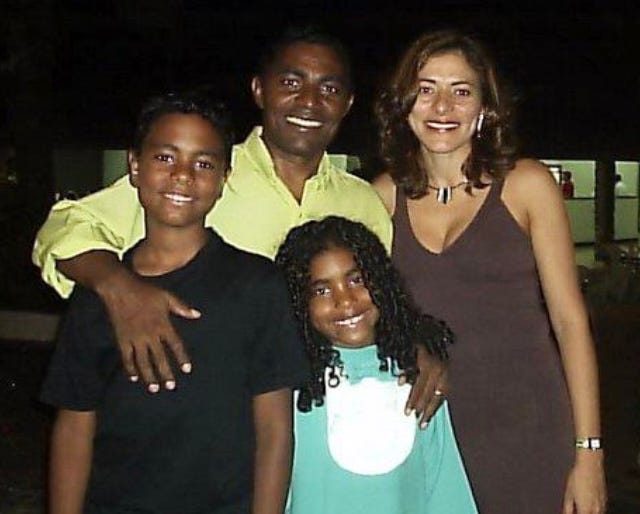
The Richard Williams vibe is strong in José Macario. “I shouldn’t say this,” Estevão says, “but when we came to look at Stanford, I remember him saying to the coach without any hesitation that she was going to be the greatest player they’ve ever had in the history of Stanford, and they were going to build a statue to her. I always had to translate these things, and I was so embarrassed. Do you hear yourself? Do you know how arrogant that is?” Then again, he adds, “I don’t know the history of the entire program, but I don’t think he was that far off [in the end].”
He’s not wrong. Stanford has had five women’s Hermann Award winners—including Christen Press, Kelley O’Hara and Andi Sullivan—but only Macario has won it twice. As for the statue, well, that’s on hold for now.
José “was very, very, very involved,” recalls Chris Lemay, Catarina’s first coach in San Diego. “He certainly steered every major decision, but all out of a place of support and love. People have said, ‘Like Serena and Venus’s dad? Or Andre Agassi and Tiger Woods’s dads?’ And I’m like, ‘Yeah, kind of.’ The commitment and the investment into his daughter were similar to those examples.”
In a story she wrote for The Players’ Tribune last year, Catarina expressed her love and gratitude for her father’s support, but she also detailed the friction they’d had, especially during her teenage years, when she thought he was often too critical of her performances, too demanding for her to score goals all the time. When Catarina finally got her driver’s license, she thought she would be able to avoid having to listen to his critiques on car rides, but she revealed that the first time she drove by herself, José tried to hide in the trunk of the car.
“There are so many stories,” she tells me, adding that she and her father have talked things through since then. “He was the one who would force me to get up in the mornings when I was younger, because I just wanted to sleep, to be a kid, to mess around. And he was like, ‘No, you’re too good for this. Go do extra training.’ Whenever I’d feel unmotivated or lazy, he would always be the one to push me. We never imagined that today we would be at the best club in the world.”
Was there ever any doubt she’d choose the USWNT over Brazil? “No,” Macario says. “When you grow up, you start to realize the injustices that are in the world, and you see people actually don’t give a shit about women’s football in Brazil. Or at least they didn’t back then. I think there’s more momentum going for them now, which is amazing to see. But at my time it became an easy decision for me, and still would be now, because I grew up in the United States. It’s where I feel my home is.”
It’s a wild, borderline impossible life journey when you think about it. Estevão still does. He did a decade ago, too, even as they were starting out in San Diego. “I was like, What are we doing? This is such a crazy idea,” he says. “And that’s all my dad. He was the visionary behind all of this. Most adults would think this seems like such a horrible idea, like the odds are against us. But he wasn’t even looking at the odds. He was just looking at the finish line.”
José Macario can’t stop laughing. Yes, it’s true, he says on our Zoom call from Brasília, where he’s visiting his wife. When Catarina was just emerging as a player in Brazil, he Googled “best women’s soccer player ever.” Mia Hamm came up in the search results, and Catarina went down a rabbit hole watching videos from Hamm’s career, noting the crowds in full U.S. stadiums who cheered for her goals. The family’s interest in moving to the U.S. started there.
The Macarios traveled to the U.S. on Thanksgiving weekend in 2011, and José went back to the Google machine again. “We visited a club in Dallas, Texas, and everyone was very welcoming, but we weren’t sure it was the ideal city for her,” he explains in Portuguese, with Estevão interpreting. “So I had Googled ‘best girls’ soccer club.’ There was a tournament called the Surf Cup in San Diego, and the tagline was The Best of the Best. And that’s how I thought San Diego was the best.” To San Diego they went.
In the United States, which has the world’s most developed women’s soccer infrastructure, the pathway for girls who want to play the game is clear. But in Brazil, which outlawed women from competing in soccer from 1941 to ’79, the cultural barriers that remain for young women in the sport are significant. A megatalent like Marta might emerge once in a generation, but her success has come despite the efforts of Brazilian authorities, not because of them.
Macario’s soccer story began at age three in São Luís, a city of 1.1 million in northeastern Brazil. Her brother had started classes at a soccer school, and Catarina would always ask to come with her father and play too.
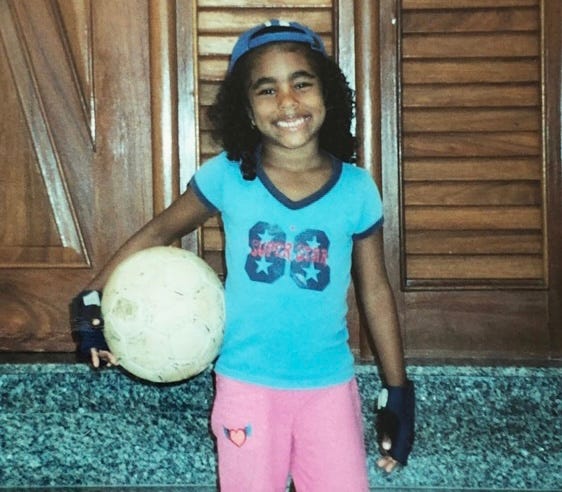
“It was a very rare thing for women to play soccer at all,” José says. “And at the school, there were no girls, just boys. The secretary told us that she could sell Catarina a uniform so she could stay on the side and play while being dressed up. But she kept insisting to play. So I made a challenge with her.” Catarina was a picky eater, and José told her if she ate beans every day until her fourth birthday, she would be allowed to play. “The day I turned four,” Catarina says, “I was like, ‘I’m never eating beans again, but I’m ready, let’s go.’”
Within weeks Catarina was attracting attention for her skills, and José enrolled his kids in a new soccer school, where he again had to make a special appeal for Catarina to be allowed to play futsal with the boys. She spent extra time training on the side with her father, dribbling through cones and working on her free kicks and one- and two-touch passing. “Everything adds up,” she says. “It was basically the 10,000-hour rule.”

Catarina loved soccer. Playing it. Watching it. Living it. The Brazilian star Ronaldinho was at the height of his powers for Barcelona in those days, winning two World Player of the Year awards, and she absorbed his style, or ginga, a hypnotizing and deceptive movement on the ball. “He was an amazing player,” she says. “You could see he had this way of playing and this ginga that was crazy. And so I tried to incorporate that in my game.”
Her mother was doing her doctoral residency 1,200 miles away in Brasília, the capital, and the whole family decided to move there. Catarina joined an outpost of Santos, the club that produced Pelé and Neymar, and she was so good she wore the number 10 on boys teams. “She was the top scorer of many tournaments, even though she was playing against boys,” José recalls. Here’s a goal she scored at age nine, in which her moves (and even her hair) are so reminiscent of Ronaldinho that people watching the game cry out his name:
But not everyone hailed the promise of this electric young girl who was embarrassing the boys teams. Catarina says she was the regular target of verbal and physical abuse in those days. “If you’re a girl there [playing soccer], you’re automatically called a lesbian,” she says. “You’re called a monkey, but that also had to do with my color. I’m sure if I was this white blonde girl it would have been different. And especially because I would wear the number 10 and actually be a player making an impact, I would get targeted. People would try to kick me as hard as possible, just to see, ‘Can she handle this?’”
It wasn’t long before the attention Catarina was attracting brought the Brazilian news media to tell her story, including this one when she was nine:
But a deadline was looming for Macario. “It came to a point that in Brasília, or at least in what we knew, there was a rule that after the age of 12 I was not going to be able to play tournaments with boys anymore,” she says. “Unfortunately, it was either I leave and go somewhere else, or I stay there and kind of let this talent die down. Thankfully, my parents really believed in me, and we had the means to be able to make this move.”
Lemay, her first coach in San Diego, remembers with remarkable clarity what happened the day 12-year-old Catarina joined his San Diego Surf team for a training session. As a prominent youth club, Lemay says, the Surf received emails all the time from parents traveling in from out of state (and occasionally from other countries) claiming their child was a supertalent. Without fail, they weren’t.
Catarina was an outlier. “The first ball that got played into Cat, she was back to goal,” Lemay says, “and it was kind of a bouncing ball. She received it off her thigh and lifted it over a player’s head and then volleyed it into the back of the net. I literally went running and said, ‘Hey, tell [José] she has a spot on this team. A hundred percent. We want her.”
“They were impressed and amazed by her,” says José, “but then we were also impressed and amazed, because we had never seen all these women playing soccer together.”
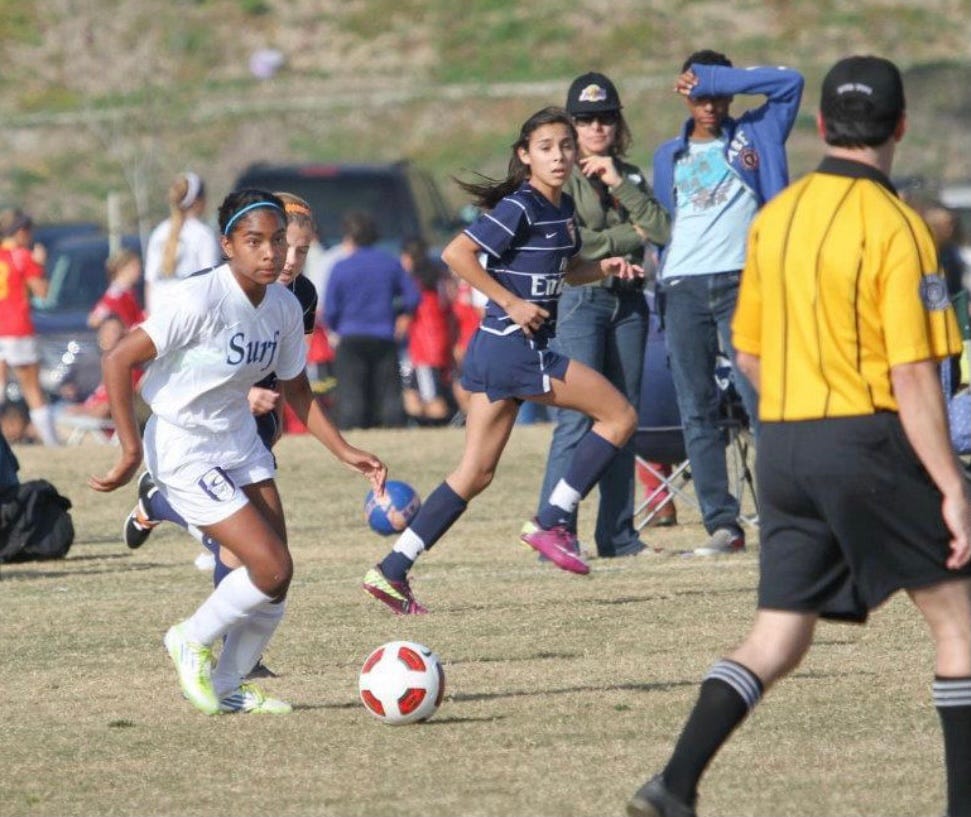
Catarina’s adjustment process was arduous at first, she says, and there were moments when she wanted to move back to Brazil. She dearly missed her mother, Ana Maria, who would visit when she could and stayed in touch via video calls. Catarina had difficulties in school at first due to her lack of English skills, and even the soccer in the U.S. was challenging.
“I struggled a lot with the fitness and physicality of the game,” she says. “Girls were just really going at it. It wasn’t as physical in Brazil, so when I came there it was kind of a shock. My coach would always tell me, ‘You need to get tougher. You have the skills to be able to do things, but you also need to be able to take that physical impact.’ I just wasn’t doing as well as I had hoped for, and I was having imposter syndrome. Do I really belong here? I just kept telling myself: You know what? I’m here for a reason.”
Things got better, though. Catarina made friends and gained the support of two surrogate moms: her teammate Bianca Caetano-Ferrara’s mother, Eliane, a Rio de Janeiro native, and Lemay’s wife, Tami. Catarina picked up English remarkably fast, started taking Advanced Placement classes in high school and eventually graduated early from Stanford with a major in communications and a minor in psychology. “I truly feel like my greatest achievement is to have graduated from Stanford University,” she says.
The soccer part came around too. In her three years with the Surf, Macario broke the Elite Clubs National League (ECNL) record with 165 goals. Says Chris Lemay, “As soon as she’d score her second goal in a game, all the kids on our bench would start chanting Cat trick, Cat trick, Cat trick! So we literally renamed the hat trick for her.”
Now Brazilian TV channels were traveling all the way to San Diego to produce stories about Catarina:
Ratcliffe, the Stanford coach, first saw her play when she was 15 at a U.S. youth national team camp in San Diego. “She immediately stood out,” he recalls. “She has all the attributes you look for: great technique with the ball, intelligence, a vision for the game. But she also had the athleticism and the power.”
By the time Macario arrived at Stanford, Ratcliffe says, her finishing ability had reached an even higher level. The result: a player who dominated college soccer like only a few greats have ever done:
To hear Catarina explain it, the two decisions she had to make—for club and country—weren’t difficult at all. Even though she would have been the No. 1 pick in last year’s NWSL draft, she opted for Lyon instead. “I knew that someone [in the NWSL] would get my rights,” she says, “but I was like, I want to be able to just pick where I go.”
Choosing Lyon “was very bold for a 21-year-old,” Hegerberg told me. “And I appreciate that she went for Lyon, because Lyon is a tough place to settle in. But we need the players with the right mindsets and a winning mentality. So if we can get in young, hungry players who are ready to face that challenge, that is the best case.”
When it came to Macario’s international career, the call was easy once she had a U.S. passport. The memories of the abuse and resistance she received in Brazil never left her.
Was there ever any doubt she’d choose the USWNT? “No,” she says. “When you grow up, you start to realize the injustices that are in the world, and you see people actually don’t give a shit about women’s football in Brazil. Or at least they didn’t back then. I think there’s more momentum going for them now, which is amazing to see. But at my time it became an easy decision for me, and still would be now, because I grew up in the United States. It’s where I feel my home is.”
Beyond almost all belief, José Macario’s plan had worked. Catarina hasn’t reached the finish line yet, they all say, but she’s well on her way. Even her father looks back on their journey and shakes his head. “The currency was like six to one,” he says of the exchange rate between Brazilian reals and U.S. dollars, “so it was a lot of sacrifice to live there. But the journey came with a lot of joy. My son graduated from USC, and my daughter graduated from Stanford. So the price was worth it.”
The way Catarina’s parents see it, only one more move would close the circle.
Dr. Ana Maria Macario is crying on our Zoom call. It’s a human response to being asked how she felt about the family’s decision to move to the U.S. a decade ago while she remained in Brazil. “It was very difficult,” she says when she gathers herself, “when it dawned upon me that this was a real possibility. It meant staying in Brazil, and that meant having to stay without my family and adapt to this new life.”
When the Macarios moved to San Diego, José came on a student visa and couldn’t take on paid work. “Everything was funded by my mother,” says Estevão. “It’s like they say: It takes a village. My mother had to hold the fort in Brazil because that was our only source of income.”
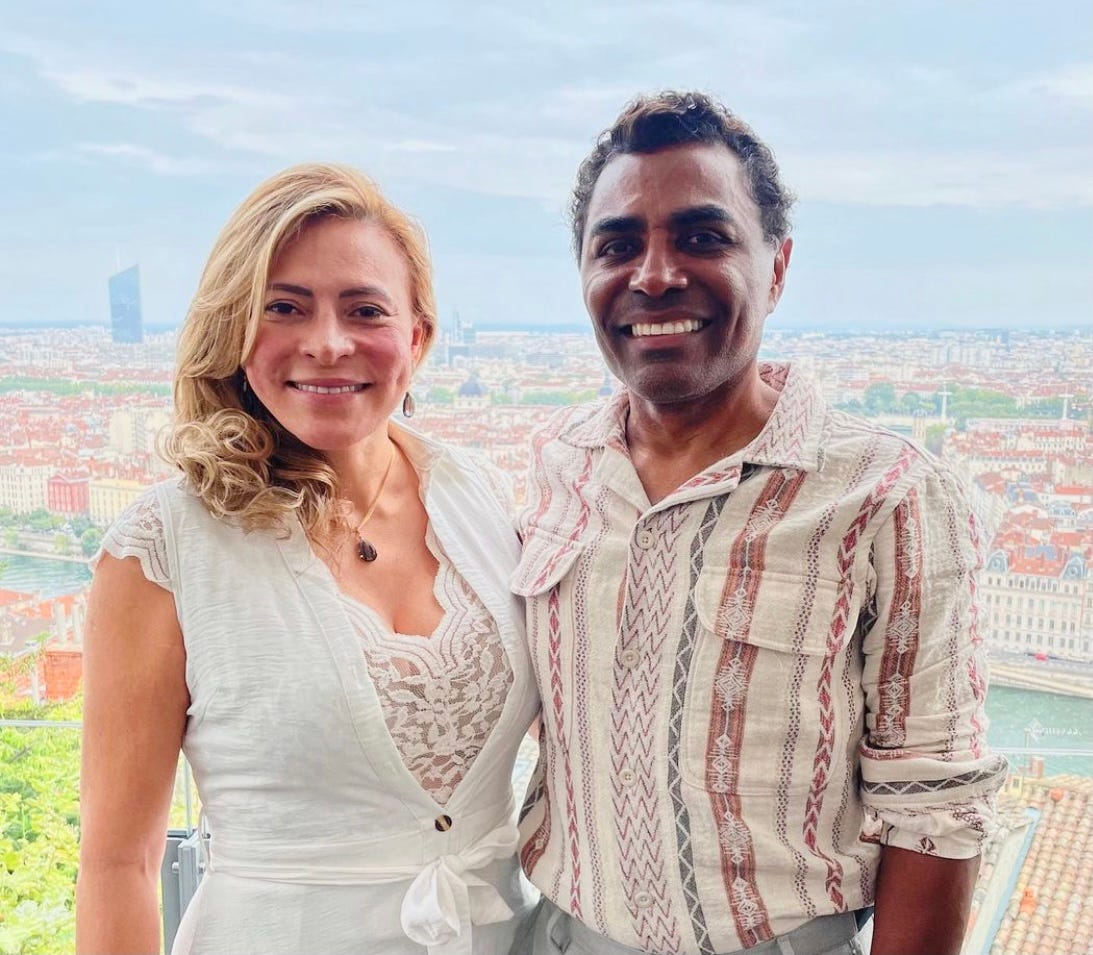
Ana Maria met José at church in São Luís when she was 17. She still has a hard time believing that in Catarina they produced a world-class athlete. But she has no misgivings at all about the influence of José’s master plan.
“If you look into the backgrounds of any genius, you’re going to see that there were people behind the scenes that had high expectations and pushed them to become what they would become,” Dr. Macario says in Portuguese, with Estevão interpreting. “In Catarina’s case it wasn’t any different. From a young child to a teenager and now a young adult, so many things could come in the way and be a distraction. It’s the role of the parents to coordinate that and make sure this raw talent and gift isn’t squashed by something else. To this day, we still have a lot of expectations, and we still ask for her to keep growing and developing.”
If everything goes the way she hopes, Ana Maria will finally be joining her husband and Catarina in Lyon in June. Eventually she wants to learn French and go back to school to obtain the certification required to practice medicine there. But she also simply wants to be with her family again. “It will be like coming back to a normal life,” she says. “I missed out a lot on Catarina’s teenage years being so far away. So this is a chance to begin again.”
Until then, Catarina will continue sharing an apartment with José. “He’s my father,” she concludes, “so the least I can do is let him stay here. And she wants to be part of this too. So I won’t be getting much independence, but at least they’ll be here. That’s what makes them happy, keeping the family together.”
“Catarina has some independence,” José argues. “The reason I’m there is to give her some structure and support, like any high-level athlete would have. And her mother never got to spend time with her that much because of the long-distance situation. That’s why she wants to move there and join us.”
There’s a solution that seems likely at some point: José and Ana Maria live together in Lyon and let Catarina have her own apartment. Her parents can still watch her games and spend time with their daughter, while she can begin leading her own life as an adult.
Tami Lemay, who grew close to the Macarios in San Diego, is hoping for just that scenario. “I think her mom being there would probably be better than just José being there,” she says. “Because then maybe he’ll shift a little bit to be with his wife, and they’ll be in the same city but not on top of her.”
As a member of the Hollywood movie industry, Estevão Macario knows his sports films. He also knows that if King Richard could be successful, perhaps someday so could a movie about his family’s story. After all, that journey has taken place on three continents and involves the world’s most popular sport.
“We’ve definitely talked about it,” he says. “But I don’t know if I would be the person to write that. I just feel like it’s so personal. And even though I think King Richard is a good movie, I also feel like it was centering this man’s experience. I understand why that choice was made, but if I were to write a movie about my sister’s experience, I would focus on my sister herself.”
“I also feel like there’s so much more to the story left yet.”
He’s right. Catarina still has a long way to go to achieve what the Williams sisters have done. But putting herself in a position to start doing those types of things with the USWNT and Lyon in the coming years is already a small miracle in itself.
Yes, it’s true that Macario will almost surely make her biggest impact in the end as a center forward. “I feel incomplete,” her father says, “because she’s still not playing her preferred position. She’s a true nine.”
But Catarina can still progress for now as a lethal collaborator with her USWNT teammates and a global superstar like Lyon’s Hegerberg, herself a center forward, who has only recently returned from a long-term injury. “I mean, she’s Ada, she’s amazing,” Catarina says. “She and I just talk about football and the game. It’s so much fun to play with her. I can’t wait for her to really be back at her best, and then I think we’re going to cause some trouble.”

As for the USWNT, its disappointing performances at the Olympics came partly as the result of an overreliance on veterans, which figures to increase Andonovski’s willingness to give Macario more opportunities now as a starter for the A squad. Her play with Lyon this season should certainly help with that call. But if Andonovski is open to saying that Macario’s best position for the national team is as a false nine, will he consider deploying her centrally up top instead of, say, 32-year-old Alex Morgan? Don’t be surprised if his answer in 2022, at least occasionally, is yes.
Macario’s time is coming. And maybe it’s an encouraging sign that her father is asking for the authority figures in Catarina’s soccer life to give her more freedom, more independence, to grow and reach her full potential. Maybe he’ll realize someday that letting go, just a little bit, would have the same impact on the home front.

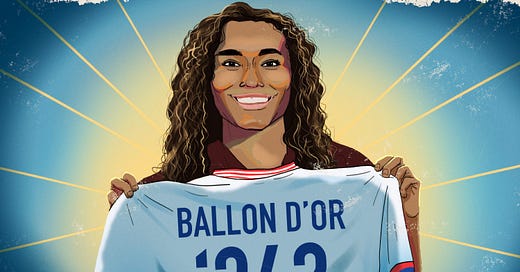



I am so excited for the NextGen USWNT, and I agree that it will likely be led by Catarina Macario. Our young USMNT, as always, gets more coverage, but I'm expecting that a relatively fresh-faced US team will win the 2023 World Cup. Thanks for shining some light on Catarina's story. And seriously, José, give your girl some space; she'll need it to flourish going forward.
NEW subscriber here, so I'm just reading this now. What an interesting story. I knew she was an up-and-comer for the USWNT, but I didn't fully know the family's story. I'll be rooting for her recovery (ACL) and *fingers crossed* appearance at the WWC next summer. Keep the USWNT content comin' Good work, Grant!